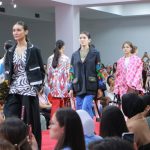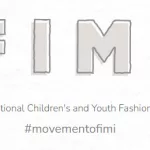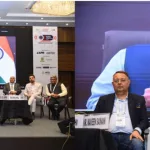Kate Fletcher
From Fashion and Sustainability DK’s Lab
(Sustainable Fashion – Issues to be addressed)
Most of us know what fashion is. Many of us know what sustainability is. But when it comes to exploring the relationship between the two, we can very quickly find ourselves on new ground. For the relationship between fashion and sustainability is active and complex and each time we look at the key ideas or issues at stake, different aspects seem to come to light. Sometimes what is emphasized is technical information about toxic chemicals or working conditions in mills and factories on the other side of the world. At other times, the fashion and sustainability relationship seems best understood by looking at what goes on locally: networks of handcrafters; dyes made from species of plant found only in local hedgerows; our individual laundering practices.
The truth is, of course, that sustainable fashion is all of these and more. It is a celebration of ingenuity, vitality, care, resourcefulness and strong relationships between us and our world, expressed in garment form.
 These sustainability values will help shape the future of fashion and give us a mental picture and sensory way markers about the direction in which we should head. Part of this “shaping” involves reducing the impact of the fashion sector as it exists today – and it is a massive job. For the production and consumption of fashion impacts hard on ecosystems, communities, workers and consumers in a variety of challenging and sometimes surprising ways. Producing fashion clothes, and the textiles they are made from, is one of the longest and most complicated industrial chains in manufacturing industry. It starts in fields with the cultivation of fibre crops like cotton and wool or in chemical plants where fibres like polyester are extracted; and ends up in homes, on our bodies and in landfill sites continents away from where they started out. The journey in between involves the use of lots of labour, water, energy and processing chemicals and produces waste and pollution.
These sustainability values will help shape the future of fashion and give us a mental picture and sensory way markers about the direction in which we should head. Part of this “shaping” involves reducing the impact of the fashion sector as it exists today – and it is a massive job. For the production and consumption of fashion impacts hard on ecosystems, communities, workers and consumers in a variety of challenging and sometimes surprising ways. Producing fashion clothes, and the textiles they are made from, is one of the longest and most complicated industrial chains in manufacturing industry. It starts in fields with the cultivation of fibre crops like cotton and wool or in chemical plants where fibres like polyester are extracted; and ends up in homes, on our bodies and in landfill sites continents away from where they started out. The journey in between involves the use of lots of labour, water, energy and processing chemicals and produces waste and pollution.
Indeed in a recent pollution risk assessment by the UK’s Environment Agency, the fashion and textile industry was rated worst.
 Thus it makes sense that sustainable fashion activity is underpinned by a deep awareness of the use of resources and how these resources are organized to meet people’s needs.
Thus it makes sense that sustainable fashion activity is underpinned by a deep awareness of the use of resources and how these resources are organized to meet people’s needs.
Central to this is “lifecycle thinking”, an approach that sees garments as a mosaic of inter-connected flows of materials, labour and as potential satisfiers of needs that move through phases of a garment’s life from fibre cultivation, to processing and transportation and into garment use, reuse and eventual disposal. Such lifecycle thinking is inspired principally from the study of ecology, where each part of a system influences every other, and where overall system effectiveness is prioritised over the individual parts.
When fashion is looked at from a lifecycle perspective, what is revealed are “hotspots” of harmful impact and opportunities for the greatest whole system improvement. For some (though certainly not all) fashion clothes, these hotspots of harm are linked to material choices.
 Traditional views of sustainable fashion focus their attention almost exclusively on materials and their provenance; on whether fibre is organically grown and fairly traded, or whether materials are from rapidly renewable sources or from recycled yarn. Today for example over 20 major brands and 1200 smaller ones now sell organic fibre products. Yet for many other fashion clothes, choice of materials has only limited effect on overall product sustainability.
Traditional views of sustainable fashion focus their attention almost exclusively on materials and their provenance; on whether fibre is organically grown and fairly traded, or whether materials are from rapidly renewable sources or from recycled yarn. Today for example over 20 major brands and 1200 smaller ones now sell organic fibre products. Yet for many other fashion clothes, choice of materials has only limited effect on overall product sustainability.
In the case of frequently laundered clothes for instance, the overwhelming hotspot of harm is the use phase of a garment’s life. Here it is our laundering choices, washing, drying and ironing behaviour and perceptions of cleanliness that have most influence over our clothes’ sustainability.
Yet these flows of resources are only part of the story. Fashion clothes are much more than the fibre and chemicals needed to make them. They are signs and symbols, expressions of culture, newness and tradition. They link us to time and space and deal with our emotional needs, manifesting us as social beings, as individuals. Thus sustainability issues in fashion are as much about cultural, economic and social phenomena as material and manufacturing ones. They are also about decadence, consumerism, expression and identity and if sustainability is to become a real possibility in fashion, then the sector has to work with these big issues and their difficult implications as well as the more bounded fibre-specific or production focused ones. For in order to make sustainability happen in the fashion sector, there needs to be change at many levels: we need both root and branch reform.
Making such sustainability-inspired reform to fashion brings to the fore the sector’s key issues, these include :
Damaging agricultural practices where some natural fibres – most notably cotton – are cultivated with very large quantities of pesticides and synthetic fertilisers, water and energy in large farms with no crop variety. The effect is to reduce the fertility of the soil; create water pollution; damage the diversity of plant and animal species; develop pesticide resistance, leading to ever higher levels of pesticides being applied in order to control pests; and damage to workers’ health through exposure to acutely toxic pesticides.
Resource intensive fibre, fabric and garment manufacturing including significant use of energy and petrochemical resources for synthetic fibres like polyester; pollution to air and water from production of synthetic and cellulose-based fibres (like viscose); and for all fibres large water consumption, use of toxic chemicals and waste generation.
Exploitation of garment workers who experience labour abuses including poverty wages, excessive working hours, forced overtime, lack of job security and denial of trade union rights. In recent years, working conditions in factories have been forced ever lower in what is called a “race to the bottom” as manufacturers compete on price for a place in the supply chain of big brands.
Damaging effects of fashion trends and imagery where the drive to constantly “renew” ourselves in the light of changing trends helps feed short-term thinking, psychological insecurity and rising levels of mental illness; while fashion imagery is linked to body issues and serious medical conditions like anorexia, which is now reaching record levels in young men as well as women.
Passive consumers who “follow” the trends prescribed by industry, who are ill informed about, and distanced from, the creative practices surrounding their clothes and who lack the practical skills to do anything about it.
Excess and wastefulness linked to consumerism and fashion consumption where we meet our desire for pleasure, new experiences, status, and identity formation through buying far more products than we need – many of them clothes.
Global brands and high street retailers profit from this relationship and for them, challenging consumerism remains a taboo subject. Indeed the trend for consumption of fashion continues upwards (in the UK, it increased by one third in the last four years) and is linked to an increase in speed: high street chains can turn around collections in as little as three weeks; and fashion seasons are now not only biannual, but each of the two main seasons contains three mini collections, opening up new opportunities to consume.
There is no denying it: fashion and sustainability issues are large in scale and tricky to navigate and it is all too easy to feel overwhelmed and see them as too global and too deep-rooted to influence. Yet contrary to common expectations, big change doesn’t just flow from decisions made at high-level international meetings or in the boardrooms of company directors; for single, small actions can have big effects. Nabeel Hamdi in his delightful book Small Change puts it like this: “in order to do something big… one starts with something small and one starts with where it counts”. Acting “small” and “where it counts” brings change towards sustainability in fashion within the grasp of each and every one of us. It starts with us asking questions of companies and suppliers and by challenging them to respond to key issues, like the ones raised above. It involves us looking at garments not just as items of beauty, or as something to wear, but in their totality – as resources, processes, symbols and values. For it is in these dynamics that sustainability will emerge in fashion. Sustainability also starts closer to home as we question our own behaviour.
As we look at what we buy and why we buy it. As we consider how we wear clothes and how we care for them. And as we reach into our sewing baskets and with needle, thread and a large measure of thoughtfulness, begin the process of re-skilling ourselves in the art and practice of creating and caring for things and not just consuming them.






